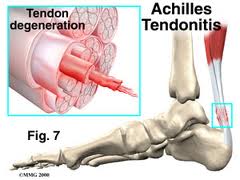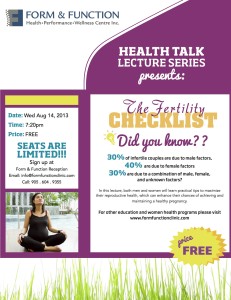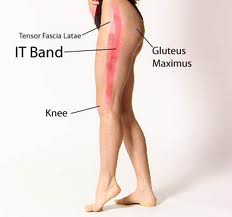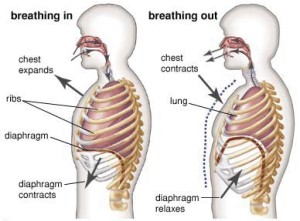Achilles Pain & Weak Glutes

A recent article by Smith et al ( 2013) has shown that runners with Achilles Tendinopathy (chronic tendinitis) also have a delay in both Glute Mede and Glute Max activation and duration of firing. Unfortunately it does not tell us if Glute inactivity is the chicken or the egg, but from a kinetic chain perspective it does make a great deal of sense. Glute Mede and max are external rotators of the leg, and with out good firing patterns, it can also play a part in pronation (foot flattening out) of the foot. Pronation is one mechanism of causing achilles injuries. Either or, if your unsure have your therapist check for glute mede and max response to load, as well as its endurance if you are suffering from Achilles tendon pain.
Neuromotor Control of Gluteal Muscles in Runners with Achilles Tendinopathy
Smith, Melinda M.; Honeywill, Conor; Wyndow, Narelle; Crossley, Kay M.; Creaby, Mark W.
Medicine & Science in Sports & Exercise: 10 October 2013
Lecture: The Fertility Check List Aug 14, sign up today
The Fertility Che cklist
cklist
Join us for an amazing fertility lecture with Naturopath Dr. Odette Bulaong
Seats are limited, first come first serve. Sign up by emailing info@formfunctionclinic.com or call 905 604 9355
Lecture: The Fertility Check List Aug 14, sign up today
The Fertility Che cklist
cklist
Join us for an amazing fertility lecture with Naturopath Dr. Odette Bulaong
Seats are limited, first come first serve. Sign up by emailing info@formfunctionclinic.com or call 905 604 9355
Stretching the Fascia
Here are few tips on stretching fascial tissue. These tissue will include such structures as the Iliotibial Band (IT), Patellar tendon, Thoraco-lumbar Fascia. Remember, these tissues are viscoelastic structures. Schleip 2005/09/12 has demonstrated that not only do these structure stiffen do to excessive rehydration after dynamic fast load, but also has a contractile component. Slow stretching for these structures have shown to have longer lasting effects on these tissue. So remember to spend upto 5-10 min with moderate and slow progressive tensionfor these structures.Dr. J

Dr. J
Relieve Neck Pain by Proper Breathing
Breathing with our diaphragm has been shown to reduce activation in some of the bad posture muscles such as the scalenes and upper trapezius . Those muscles are typically the overactive muscles seen in people with chronic neck pain and bad posture. A great way to relax those muscles is by simply working on utilizing your diaphragm when breathing. You will want to make sure that you are expanding your stomach, as well as your ribs laterally when taking in a deep breath, instead of lifting your chest. Try putting one hand on your belly, and the other hand on your chest, and take 10 deep breaths without lifting your chest. This is a great way to relax those bad posture muscles, activating your diaphragm, while reducing stress.
. Those muscles are typically the overactive muscles seen in people with chronic neck pain and bad posture. A great way to relax those muscles is by simply working on utilizing your diaphragm when breathing. You will want to make sure that you are expanding your stomach, as well as your ribs laterally when taking in a deep breath, instead of lifting your chest. Try putting one hand on your belly, and the other hand on your chest, and take 10 deep breaths without lifting your chest. This is a great way to relax those bad posture muscles, activating your diaphragm, while reducing stress.
January Health Talk
Do You Have Suboccipital Headaches?
For some, headaches can be very annoying and in some cases, debilitating. There are many categories and types of headaches; some of which include migraines, cluster, tension type, hormonal, sinus andrebound headaches. Out of all types of headaches, there is one that is common among our postural challenged comrades. This commonly misdiagnosed, yet treatable headache is called “suboccipital headaches”.
Form & Function treating at Team Canada vs South Africa Rugby Game
Joint Form & Functions medical staff at the Team Canada vs South Africa Rugby league game at Fletchers Field in Markham. Dr. Jim Feng will be the team Canada head medical staff for this game.
